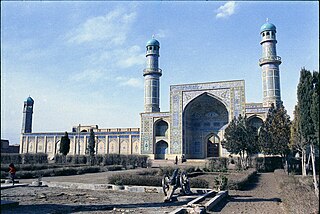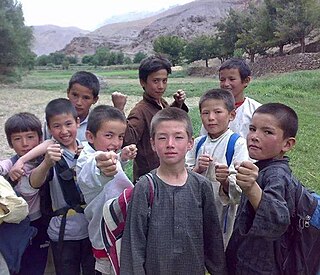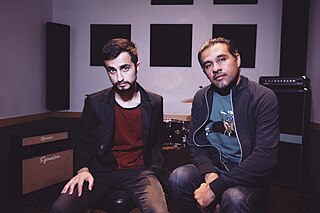The Aimaq or Chahar Aimaq, also transliterated as Aymaq, Aimagh, Aimak, and Aymak are a collection of Sunni and mostly Persian-speaking nomadic and semi-nomadic tribes. They live mainly in the central and western highlands of Afghanistan, especially in Ghor and Badghis. Aimaqs were originally known as chahar ("four") Aymaqs: Jamshidi, Aimaq Hazara, Firozkohi, and Taymani. The Timuri, which is a separate tribe but is sometimes included among Aimaqs, which is known as Aimaq-e digar.

The economy of Afghanistan is listed as the 155th largest in the world in terms of nominal gross domestic product (GDP), and 137th largest in the world in terms of purchasing power parity (PPP). With a population of around 41 million people, Afghanistan's GDP (nominal) stands at $6.81 billion as of 2024, amounting to a GDP per capita of $200. Its annual exports exceed $1.0 billion, with agricultural, mineral and textile products accounting for 94% of total exports. The nation's total external debt is $8.0 billion as of 2024. Afghanistan’s (GDP) nominal is projected to fall to $5.79 billion & GDP per capita $142 for the financial year 2025.

The history of Afghanistan, preceding the establishment of the Emirate of Afghanistan in 1823 is shared with that of neighbouring Iran, Central Asia and the Indian subcontinent. The Sadozai monarchy ruled the Afghan Durrani Empire, considered the founding state of modern Afghanistan.

Herāt is an oasis city and the third-largest city in Afghanistan. In 2020, it had an estimated population of 574,276, and serves as the capital of Herat Province, situated south of the Paropamisus Mountains in the fertile valley of the Hari River in the western part of the country. An ancient civilization on the Silk Road between West, Central and South Asia, it serves as a regional hub in the country's west.

The Hazaras are an ethnic group and a principal component of the population of Afghanistan. They are one of the largest ethnic groups in Afghanistan and primarily residing in the Hazaristan (Hazarajat) region in central Afghanistan. Hazaras are also as significant minority groups in Pakistan mainly in Quetta and Iran mainly in Mashhad. They speak the Dari and Hazaragi dialects of Persian. Dari, also known as Dari Persian, is one of two official languages of Afghanistan.

Kabul is the capital city of Afghanistan. Located in the eastern half of the country, it is also a municipality, forming part of the Kabul Province. The city is divided for administration into 22 municipal districts. In 2023 its population was estimated to be 4.95 million people. In contemporary times, Kabul has served as Afghanistan's political, cultural and economical center. Rapid urbanisation has made it the country's primate city and the 75th-largest city in the world.

Dari, also known as Dari Persian, is the variety of the Persian language spoken in Afghanistan. Dari is the Afghan government's official term for the Persian language; it is known as Afghan Persian or Eastern Persian in many Western sources. The decision to rename the local variety of Persian in 1964 was more political than linguistic to support an Afghan state narrative. Apart from a few basics of vocabulary, there is little difference between formal written Persian of Afghanistan and Iran; the languages are mutually intelligible. Dari is the official language for 35 million Afghans in Afghanistan and it serves as the lingua franca for interethnic communications in Afghanistan.

Ghazni, historically known as Ghaznain (غزنين) or Ghazna (غزنه), also transliterated as Ghuznee, and anciently known as Alexandria in Opiana, is a city in southeastern Afghanistan with a population of around 190,000 people. The city is strategically located along Highway 1, which has served as the main road between Kabul and Kandahar for thousands of years. Situated on a plateau at 2,219 metres (7,280 ft) above sea level, the city is 150 kilometres (93 mi) south of Kabul and is the capital of Ghazni Province. The name Ghazni drives from the Persian word "ganj", meaning ‘treasure’.

Arachosia, or Harauvatis, was a satrapy of the Achaemenid Empire. Mainly centred around the Arghandab River, a tributary of the Helmand River, it extended as far east as the Indus river. The satrapy's Persian-language name is the etymological equivalent of Sárasvatī in Vedic Sanskrit. In Greek, the satrapy's name was derived from Arachōtós, the Greek-language name for the Arghandab River. Around 330 BCE, Alexander the Great commissioned the building of Alexandria Arachosia as Arachosia's new capital city under the Macedonian Empire. It was built on top of an earlier Persian military fortress after Alexander's conquest of Persia, and is the site of today's Kandahar in Afghanistan.

The National Museum of Afghanistan is a two-story building located across the street from the Darul Aman Palace in the Darulaman area of Kabul, Afghanistan. It was once considered to be one of the world's finest museums. There have been reports about expanding the museum or building a new larger one.

Greater Khorāsān or Khorāsān or Khurāsān is a historical eastern region in the Iranian Plateau between West and Central Asia that encompasses western and northern Afghanistan, northeastern Iran, the eastern halves of Turkmenistan and Uzbekistan, western Tajikistan, and portions of Kyrgyzstan and Kazakhstan.

Darul Aman Palace is a three-story-tall palace located in Darulaman, about 16 km (9.9 mi) south-west of the center of Kabul, Afghanistan. Surrounding the palace are the following buildings: the National Assembly, the National Museum of Afghanistan and the Afghan International University.
Fārsīwān is a contemporary designation for Persian speakers in Afghanistan and its diaspora elsewhere. More specifically, it was originally used to refer to a distinct group of farmers in Afghanistan and urban dwellers.
Robert Duncan McChesney is a scholar of the social and cultural history of Central Asia, Iran, and Afghanistan.

Sikhism inAfghanistan in the contemporary era is limited to small populations, primarily in major cities, with the largest numbers of Afghan Sikhs living in Jalalabad, Ghazni, Kabul, and to a lesser extent in Kandahar and Khost. Sikhs have been the most prevalent non-Muslim minority in Afghanistan, and despite the many political changes in recent Afghan history, governments and political groups have generally not indulged in openly discriminating against the Sikh minority; however, their status have been severely impacted amid the country's conflict since 1978.

Kabul Dreams is a rock band from Afghanistan, established in 2008 in Kabul. The band consists of Sulyman Qardash, Siddique Ahmed (bassist) and Jai Dhar (drummer). The band is managed by Alykhan Kaba. Kabul Dreams has paved the way for a modest but growing rock scene in Afghanistan, rebuilding itself after decades of war. The band’s motivation to perform came from their own love for music, but also from a public hunger for a new life after war – a life that included new music and art.

Overseas Indians, officially Non-Resident Indians (NRIs) and People of Indian Origin (PIOs) are Indians who reside or originate outside of India. According to the Government of India, Non-Resident Indians are citizens of India who currently are not living in India, while the term People of Indian Origin refers to people of Indian birth or ancestry who are citizens of countries other than India. Overseas Citizenship of India (OCI) is given to People of Indian Origin and to persons who are not People of Indian Origin but married to Indian citizen or People of Indian Origin. Persons with OCI status are known as Overseas Citizens of India (OCIs). The OCI status is a permanent visa for visiting India with a foreign passport.

The Fondukistan monastery was a Buddhist monastery located at the very top of a conical hill next to the Ghorband Valley, Parwan Province, about 50 kilometers northwest of Kabul. The monastery dates to the early 8th century CE, with a terminus post quem in 689 CE obtained through numismatic evidence, so that the Buddhist art of the site has been estimated to around 700 CE. This is the only secure date for this artistic period in the Hindu Kush, and it serves as an important chronological reference point.




























